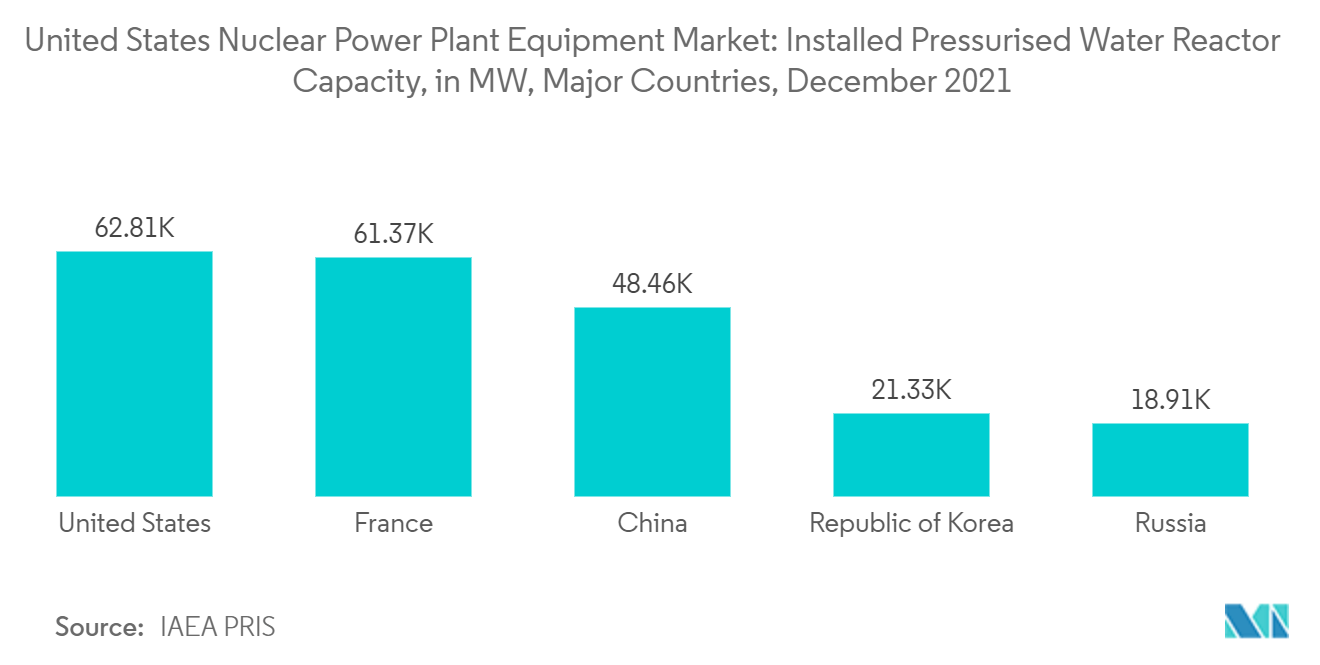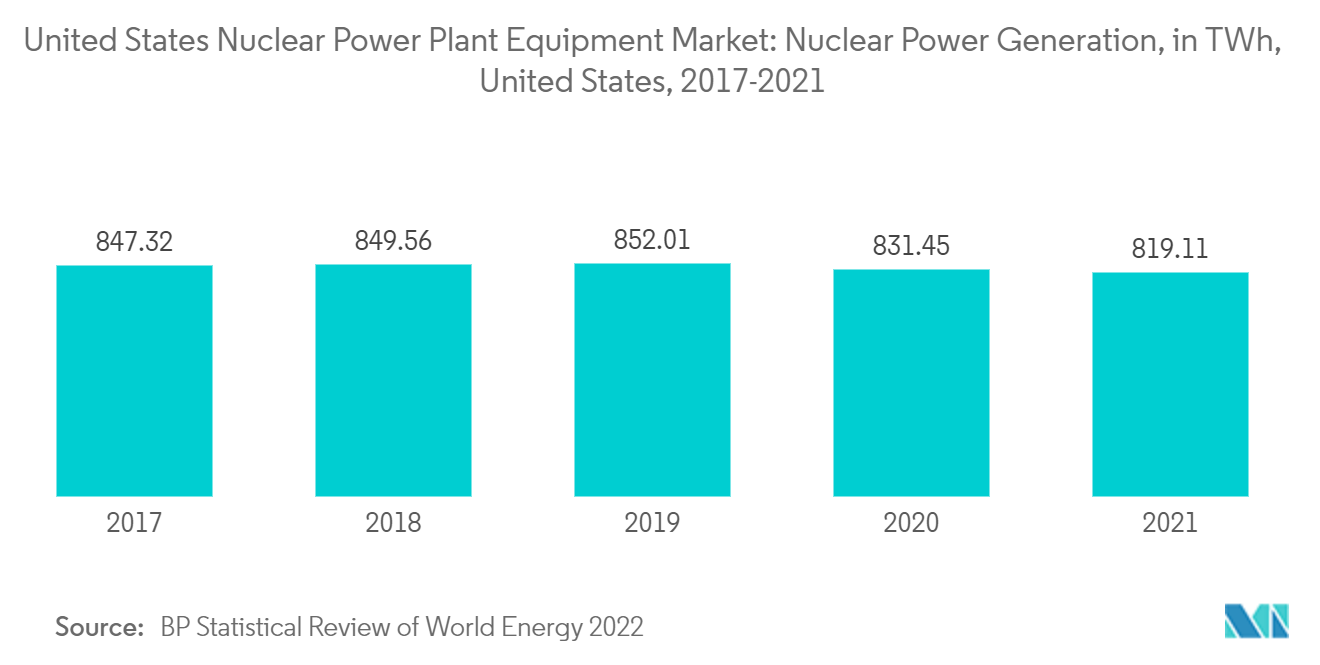Market Trends of United States Nuclear Power Plant Equipment Industry
This section covers the major market trends shaping the US Nuclear Power Plant Equipment Market according to our research experts:
Pressurized Water Reactors to Dominate the Market
- A typical design of a commercial PWR is such that the core inside the reactor vessel creates heat. The core of the reactor pressure vessel (RPV) contains nuclear fuel, a moderator, control rods, and coolant that is cooled and moderated by high-pressure liquid water. PWR consists of a reactor vessel, steam generators, reactor coolant pumps, control roads, a pressurizer, and other elements.
- One of the biggest markets for nuclear energy and PWR reactors is the United States.The World Nuclear Organization says that as of November 2021, 62 of the 93 working reactors in the country are PWR reactors, which is about 65.7% of the country's total installed nuclear capacity.The United States' installed pressurized water reactor capacity will be about 62,814 MW in 2021.
- Also, the only two units being built in the United States are the Vogtle 3 and 4 nuclear reactors, which will use Westinghouse AP1000 PWRs and have a total installed capacity of 2500 MW.Significant growth in the market for nuclear equipment is also expected in the future, with five additional pressurized water reactors planned.
- Nuclear energy held a significant share in electricity generation in the United States. With 819 TWh of electricity in 2021, the share of nuclear power accounted for nearly 29.3% of the total electricity generation, and nuclear power generation is expected to grow in the forecast period.
- With advantages like low operating costs and less fissile material in the core reactor, pressurized water reactors are expected to dominate the market in the future.

Island Equipment to Dominate the Market
- Despite a halt in the construction of new nuclear power plants for more than 30 years, the country's reliance on nuclear power has grown. Also, the World Nuclear Organization says that almost 28% and 15% of the total capital investment, respectively, are for building and setting up the nuclear island and the conventional island.
- In 2017, the Nuclear Regulatory Commission (NRC) of the United States gave license extensions of 20 years to more than 75% of the fleet. This means that the operation can continue for another 50 years.The plant's operators also plan to ask for another 20 years of life, which would bring the total life of a plant to 80 years.
- As of December 2021, the country has 93 nuclear power reactors that are running. Together, they can produce 819 TWh of electricity, which is 95.52 GWe.As the need for clean energy grows and new reactors are built, the amount of nuclear energy generated is expected to grow significantly. This is expected to drive the demand for island equipment during the forecast period.
- During the forecast period, the market is likely to be driven by factors like falling costs of nuclear power generation and upcoming projects, as well as government programs and initiatives like the Regional Greenhouse Gas Initiative, state initiatives, and zero-emission credits.

